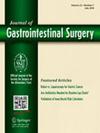Short- and midterm outcomes of prehabilitation in abdominal wall surgery: a retrospective cohort study
IF 2.2
3区 医学
Q3 GASTROENTEROLOGY & HEPATOLOGY
引用次数: 0
Abstract
Background
Data concerning prehabilitation in abdominal wall surgery (AWS) remain scarce and controversial. This study aimed to compare the postoperative short- and midterm outcomes between patients with prehabilitation and those without prehabilitation before AWS.
Methods
All consecutive patients who underwent surgery for primary/incisional, midline/lateral, and parastomal hernias between October 2021 and October 2024 were retrospectively included. Patients who underwent prehabilitation (including nutritional support, psychological support, and physical preparation) were compared with those who did not undergo prehabilitation. The primary outcome was 30-day morbidity.
Results
A total of 315 patients were included: 114 with prehabilitation and 201 without prehabilitation. Preoperative and intraoperative characteristics were similar in both groups, except for the higher botulinum toxin injection (BTI) rate (71/114 in the prehabilitation group vs 18/201 in the no-prehabilitation group; P <.001) and larger median hernia size (10 cm in the prehabilitation group vs 6 cm in the no-prehabilitation group; P <.001). There were no differences between both groups in complication rates (35/114 in the prehabilitation group vs 61/201 in the no-prehabilitation group; P =.948), major complications (15/114 in the prehabilitation group vs 28/201 in the no-prehabilitation group; P =.848), surgical site occurrences (23/114 in the prehabilitation group vs 40/201 in the no-prehabilitation group; P =.953), and median length of stay (3 days in the prehabilitation group vs 2 days in the no-prehabilitation group; P =.707). In contrast, the recurrence rate was lower in patients in the prehabilitation group than in those in the no-prehabilitation group (2/114 vs 14/201, respectively; P =.043; median follow-up: 16 months [95% CI, 15–17]). Among patients who received BTI, patients in the prehabilitation group had a lower complication rate than those in the no-prehabilitation group (20/71 vs 10/18, respectively; P =.028). Prehabilitation was independently associated with a decreased morbidity rate among patients who received BTI (odds ratio, 0.3 [95% CI, 0.1–0.9]; P =.027).
Conclusion
Prehabilitation did not decrease postoperative morbidity in the overall cohort but was associated with a lower midterm recurrence rate. In the BTI subgroup, patients in the prehabilitation group had less complications, suggesting a potential benefit of coupling BTI with a prehabilitation pathway.

腹壁手术前康复的中短期结果:一项回顾性队列研究。
背景:关于腹壁手术(AWS)预适应的数据仍然很少且有争议。本研究旨在比较有或无预适应的患者在AWS前的术后短期和中期结果。方法:回顾性分析2021年10月至2024年10月期间所有连续手术治疗原发性/切口、中线/外侧和造口旁疝的患者。接受康复治疗(包括营养支持、心理支持和身体准备)的患者与未接受康复治疗的患者进行比较。主要终点为30天的发病率。结果:共纳入315例患者,其中康复114例,未康复201例。两组术前和术中特征相似,除了肉毒毒素注射(BTI)率较高(71/114比18/201)。结论:在整个人群中,预康复并没有降低术后发病率,但与较低的中期复发率相关。在BTI亚组中,预康复患者的并发症较少,这表明BTI与预康复途径相结合的潜在益处。
本文章由计算机程序翻译,如有差异,请以英文原文为准。
求助全文
约1分钟内获得全文
求助全文
来源期刊
CiteScore
5.50
自引率
3.10%
发文量
319
审稿时长
2 months
期刊介绍:
The Journal of Gastrointestinal Surgery is a scholarly, peer-reviewed journal that updates the surgeon on the latest developments in gastrointestinal surgery. The journal includes original articles on surgery of the digestive tract; gastrointestinal images; "How I Do It" articles, subject reviews, book reports, editorial columns, the SSAT Presidential Address, articles by a guest orator, symposia, letters, results of conferences and more. This is the official publication of the Society for Surgery of the Alimentary Tract. The journal functions as an outstanding forum for continuing education in surgery and diseases of the gastrointestinal tract.

 求助内容:
求助内容: 应助结果提醒方式:
应助结果提醒方式:


